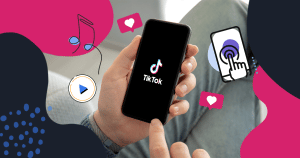
In any business endeavor, success is all about how well you know the people you’re appealing to. Content marketing is no exception. If you want to write engaging, intriguing pieces of content, you have to perceive the needs, concerns, and backgrounds of your potential readers. Only then can you craft content that they will be able to understand and find interesting. Through the following strategies, you can figure out exactly who your readers are, setting the stage for enduring success in your content marketing campaign:
Step 1: Learn the Basic Background
Start by learning the basic demographic characteristics and background details of your audience. It is particularly important to know:
- Geographic Location – Customers in different locations tend to have different shopping needs, use different slang terms, and be exposed to different types of marketing materials in their daily lives. It is thus essential that you tailor your writing to the location of your readers. As specifically as possible, figure out where potential customers live. If you plan to advertise to customers in a range of different locations, determine the four or five top sites that they will be from.
- Age Range – Depending on what you sell, there’s a good chance that your customers will primarily consist of people within a specific age range. Figure out what this age range is and then determine what characteristics will make your content most appealing to people who are that age. For example, millennials, or people born between the early 1980s and the mid 1990s, tend to prefer content that includes both written text and visual images. If you mainly sell to millennials, you should be making content like this.
- Level of Education – Are most of your customers high school graduates? College graduates? High school dropouts? The answer to this question determines what kind of writing style you should use. In general, the more educated your readers are, the more you can rely on complex, technical language. Readers with lower levels of education may also need you to provide more context for the claims you make in your writing.
- Primary Language – Generally, you should be writing content in the same language or languages that you do business in. But it’s important to know how comfortable your readers are in that language. For example, if you are writing in English but many of your customers only speak English as a second language, you should make sure you’re not using terms they’ll have trouble understanding.
By determining these demographic details from the beginning, you can make sure your readers can fully comprehend what you write, so your content is never lost on them
Step 2: Determine Readers’ Goals
Why would anyone want to read what you’re writing? Customers don’t read marketing content because they have nothing better to do. They read it because they have some specific problem they are trying to solve or question they want to answer. You need to figure out what this problem or question is from the beginning and then use your content to address it.
Customers don’t read marketing content because they have nothing better to do. They read it because they have some specific problem they are trying to solve or question they want to answer. Tweet This!
Let’s say your company installs solar panels on residential roofs. Prospective customers are likely to be environmentally-conscious homeowners who seek to stop climate change, air pollution, and other ecological threats. Odds are, their questions will be things like “what’s the best way to lower my environmental footprint?” or “what’s an affordable way to use renewable energy?” If you answer those questions directly in your writings, those homeowners are more likely to find that content in their search engine results, take an interest in it, and read it to the end. Thus by tailoring your writing to potential customers’ questions and needs, you make it more popular and effective.
Step 3: Assess Prior Knowledge
Once you know what answers your customers want, you need to estimate how much information they already have on the subject. Do you expect your site to be the first thing that customers read on that topic? Or have they probably read about it before? If so, what kinds of sources would they likely have read?
These questions are critical for deciding how much context you need to provide in your writing. If prospective customers are reading about this topic for the first time, you will likely need to summarize all the background information relating to the topic. But if you’re appealing to people who have already read a lot about your topic or are further along in the sales funnel, you can skip the background information and instead talk about specific aspects of the topic.
Understanding readers’ prior knowledge also allows you to determine whether there are any myths you need to debunk. Pop culture sources often get technical details wrong, especially if they’re talking about highly complex, cutting-edge products. If you think your customers have read a lot of inaccurate sources, you should use your content marketing to clear up those inaccuracies.
For more information on knowing your audience and writing quality content, contact WriterAccess today.







